Investigating the Effects of PA66 Electrospun Nanofibers Layered within an Adhesive Composite Joint Fabricated under Autoclave Curing
- PMID: 37720802
- PMCID: PMC10500682
- DOI: 10.1021/acsomega.3c03419
Investigating the Effects of PA66 Electrospun Nanofibers Layered within an Adhesive Composite Joint Fabricated under Autoclave Curing
Abstract
Enhancing the performance of adhesively joined composite components is crucial for various industrial applications. In this study, polyamide 66 (PA66) nanofibers produced by electrospinning were coated on unidirectional carbon/epoxy prepregs to increase the bond strength of the composites. Carbon/epoxy prepregs with/without PA66 nanofiber coating on the bonding region were fabricated using the autoclave, which is often used in the aerospace industry. The single lap shear Charpy impact energy and Mode-I fracture toughness tests were employed to examine the effects of PA66 nanofibers on the mechanical properties of the joint region. Scanning electron microscopy (SEM) was used to investigate the nanofiber morphology and fracture modes. The thermal characteristics of Polyamide 66 nanofibers were explored by using differential scanning calorimetry (DSC). We observed that the electrospun PA66 nanofiber coating on the prepreg surfaces substantially improves the joint strength. Results revealed that the single lap shear and Charpy impact strength values of the composite joint are increased by about 79 and 24%, respectively, by coating PA66 nanofibers onto the joining region. The results also showed that by coating PA66 nanofibers, the Mode-I fracture toughness value was improved by about 107% while the glass transition temperature remained constant.
© 2023 The Authors. Published by American Chemical Society.
Conflict of interest statement
The authors declare no competing financial interest.
Figures


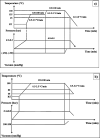


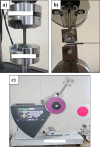



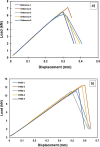





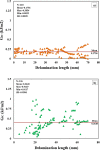
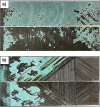
References
-
- Noor A. K.; Venneri S. L.; Paul D. B.; Hopkins M. A. Structures technology for future aerospace systems. Comput. Struct. 2000, 74 (5), 507–519. 10.1016/S0045-7949(99)00067-X. - DOI
-
- Encinas N.; Oakley B. R.; Belcher M. A.; Blohowiak K. Y.; Dillingham R. G.; Abenojar J.; Martínez M. A. Surface modification of aircraft used composites for adhesive bonding. Int. J. Adhes. Adhes. 2014, 50, 157–163. 10.1016/j.ijadhadh.2014.01.004. - DOI
-
- Brito C. B. G.; De Cássia Mendonca Sales Contini R.; Gouvêa R. F.; De Oliveira A. S.; Arbelo M. A.; Donadon M. V. Mode I interlaminar fracture toughness analysis of Co-bonded and secondary bonded carbon fiber reinforced composites joints. Mater. Res. 2017, 20, 873–882. 10.1590/1980-5373-mr-2016-0805. - DOI
-
- Shin K. C.; Lee J. J.; Lee D. G. A study on the lap shear strength of a co-cured single lap joint. J. Adhes. Sci. Technol. 2000, 14 (1), 123–139. 10.1163/156856100742140. - DOI
-
- Omairey S.; Jayasree N.; Kazilas M. Defects and uncertainties of adhesively bonded composite joints. SN Appl. Sci. 2021, 3 (9), 1–14. 10.1007/s42452-021-04753-8. - DOI
LinkOut - more resources
Full Text Sources
Research Materials

